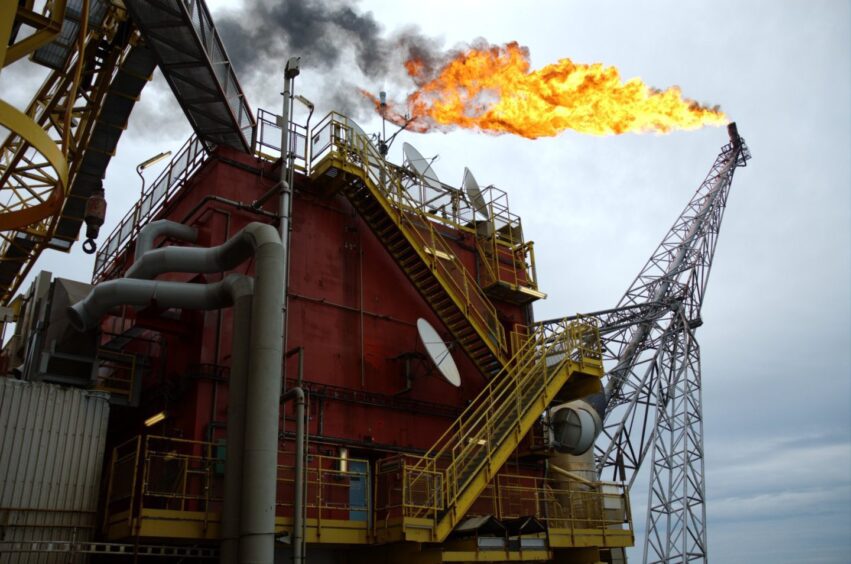
North Sea emissions have been slashed 24% since 2018 as operators pluck low-hanging fruit to drive down their CO2 profiles.
However, another 26% has to be found within the next seven years to reach targets agreed with the UK Government in 2021, meaning major spending decisions ahead.
According to a new report from trade body Offshore Energies UK (OEUK), emissions in the sector fell to the equivalent on 14.28m tonnes of CO2 in 2022, compared to 18.9m tonnes in 2018.
So far, that’s been completed through “low-hanging opportunities” of operational improvements, process optimisation and older assets being decommissioned.
Flaring and venting was reduced by 50%, from 4.62 million tonnes CO2e to 2.32 million tonnes.
However the next stage will be harder – offshore power generation is the big culprit, accounting for around 65% of emissions, and alternatives need to be found or assets may be shut down prematurely.
Electrification, seen by many as vital, has been lamented by operators as being very complex and costly – and grid connection may not be available in time to make it happen.
Recently Equinor revealed that 2030 is the “earliest” an electrification plan in the West of Shetland will be available, and Ithaca Energy has paused involvement.
Elsewhere Harbour Energy said it is having “difficulty” with the central North Sea hub project, which is targeting first power in 2028.
Last week, the regulator the NSTA warned that further production consents could be withheld if fields are not electrification ready.
Alternatives, like renewable fuels, are being mooted, but many platforms face early shut down if they can’t get a handle on those emissions.
North Sea emissions
The OEUK 2023 emissions report states that UK carbon footprint would increase by 50 million tonnes of CO2 by 2050 without new investment in domestic oil and gas production.
Right now, the UK takes its highest amount of imports from Norway – which has lower emissions than domestic supply – but any further extras would most likely come from Liquefied Natural Gas (LNG), from countries like the US, at a higher carbon footprint.
In a best-case scenario, the trade body said the UK could still provide 50% of the country’s oil and gas needs by 2030.
That comes as OEUK warned this year that 90% of operators had cut investment over the windfall tax.
Sustainability and policy director Mike Tholen said: “The sector has shown continuous commitment to decarbonisation – achieving a third consecutive year of emissions reductions, halving flaring and venting, and cutting methane emissions by 45 per cent in 2022.
“Even though the sector is making big strides, progress is starting to slow. The low-hanging opportunities, like operational improvements and cuts to flaring and venting, having already been achieved.
“Further reductions will now rely on large-scale, capital-intensive projects – so we need to make sure the UK becomes an irresistible place to do business to scale up these solutions.”
Recommended for you

